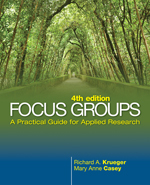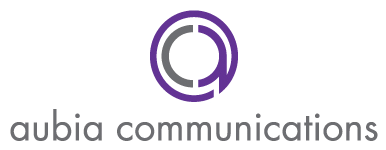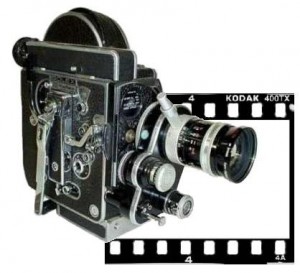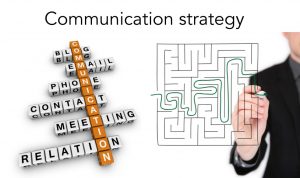This post is a paper I wrote for my Public Relations and Public Opinion Research course at Syracuse University in the spring of 2013. This research method critique reviews Richard A. Krueger and Mary Anne Casey’s textbook “Focus Groups: A Practical Guide for Applied Research” 4th Edition published by Sage Publications.
For September, the Aubia Communications Blog will focus on research methods in Public Relations. I start with this review of a text book on focus groups, followed by posts on surveys and content analysis.

Not just any gathering of people can be called a focus group. There are four distinguishable features that set focus groups apart from other assemblies.
1. Focus groups have a defined purpose.
In using this method, researchers are listening and gathering qualitative data.
2. The size of the crowd is considered.
Usually participants in a focus group are kept to five to 10 people so all members are able to share their opinions. A permissive environment is set by the moderator so participants can share without feeling threatened and know their responses will be kept confidential.
3. Focus groups have a specific composition.
Particular attention is paid to the characteristics of the participants. They are similar in precise ways that are strategic to the purpose of the focus group, but members typically do not know each other personally as to provide a more open setting for discussion.
4. A certain set of procedures are followed to facilitate dialogue among participants.
Discussions are focused around carefully-selected questions to obtain the information needed to answer research inquiries. The moderator follows a planned script to keep the conversation on topic and moving, but allows the group participants to express their feelings, comments and thought processes without fear of reprisal.
Advantages and Disadvantages
Focus groups allow researchers to gain a better understanding of a subject. By using open-ended questions, researchers can gage a range of feelings and thoughts about a topic more so than other more stringent research methods. Focus groups focus on the “why” behind the rigid results of “what” and “how” of these other methods. By hearing the language and seeing the interrelations of a target audience, focus groups allow the researcher to interact with a target audience, gaining a valuable sense of the cultural norms. This allows for more resonating development of programs and further study, such as word choice in future research instruments.
On the flip side, focus groups are harder to organize. They take time and careful consideration to draw participants and establish an environment of trust. Members have a propensity to intellectualize; people tend to be more rational when looking back than may have been the actual case. Participants may also say what they think is acceptable in a group setting instead of what they really feel. Individual personalities can come into conflict in a group setting, as well. Some may be dominant and speak more while others may be reserved and keep their thoughts to themselves. If the researcher does not act to prevent this pressure, the results can be skewed.
When to Use and Not Use Focus Groups
Researchers should use focus groups when they are looking for a range of ideas or feelings people have about a topic; are trying to understand the differences in perspectives between groups of people (this is why a rule of thumb is to host three to four focus groups per category of participants to reach saturation of a subject); the purpose is to uncover factors that influence opinions, behavior or motivation; want ideas to emerge from the group through synergy but not consensus; need to pilot-test ideas, material, plans or policies; material is required to design a large-scale quantitative study by understanding the words or language a target audience uses to talk about the matter; and information is needed to understand quantitative data already collected by getting at the “why” behind the hard facts. These cases are best investigated by the free-flowing discussion central to the focus group method.
Focus groups would be an ideal research method choice when a company wants to determine what corporate social responsibility program would resonate most among its stakeholders; when a utility needs to discover why its latest survey returned results showing a majority of customers were unsatisfied with trash collection days; and a non-profit organization needs to learn what motivates a target audience to donate.
Researchers should not use focus groups when they want people to come to a consensus; to educate people on a topic; don’t intend to use the results but instead want to give the appearance of listening; are asking for sensitive information that should not be shared in a group setting; need statistical projections as a focus group size is too small and the sample is not collected randomly to provide predictions; the environment is too emotionally charged and a group discussion will intensify the conflict; will not have control over critical aspects of the study; and better quality and economical results can be produced with other research methods. These instances would create distrust of the researcher and hosting organization among members of the focus group, and violate the focus group feature of a trusting environment that can ensure confidentiality and open communication.
Focus groups would not be a wise research method choice if a company wanted to inform stakeholders of its CSR program; a union needs its member to decide on a new strike policy; or a non-profit organization needs to learn percentages of target publics that donate to include in the annual report.
WIIFY
Knowing how to conduct focus groups will make for a better-rounded Public Relations practitioner. Using this method, PR professionals can provide clients with valuable information as the background for a plan. If we hire someone to do this research for a client, we now have a better understanding how to observe the method and ask relevant questions about the results. Including this skill in your repertoire makes you a more valuable practitioner to the field and to clients.



